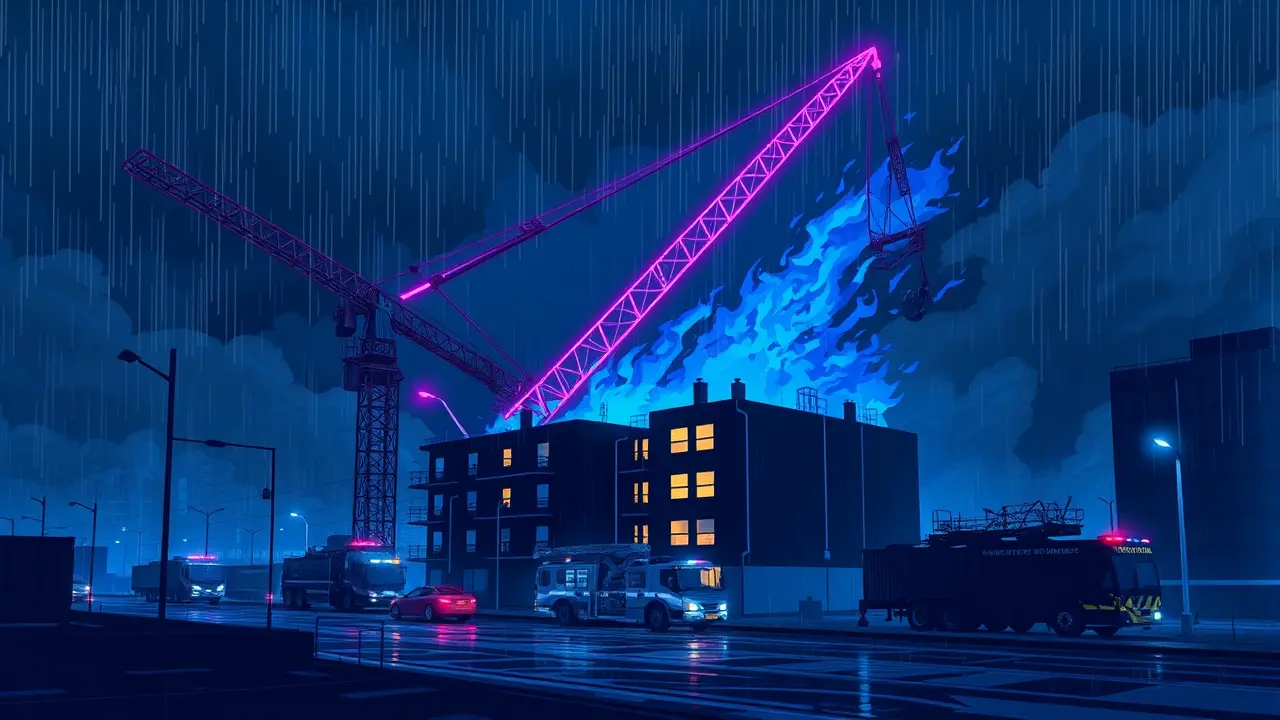Deadly Storm Causes Destruction in Paris Suburbs
The sky over Ermont turned from a placid Monday evening grey to a churning, violent maelstrom in mere minutes, a meteorological ambush that would leave the Parisian suburb reeling and one resident dead. This wasn't just a summer squall; it was a raw demonstration of nature's indiscriminate power, its violent winds acting with the precision of a surgical strike on three separate construction cranes, sending their colossal metal frames twisting and crashing down in a cacophony of shearing steel and shattered concrete.The human cost is immediate and visceral: nine injured, their lives suddenly and brutally altered, and one life lost, a stark reminder that behind every breaking news alert are families plunged into unimaginable grief. As emergency services, their blue and red lights painting the rain-slicked streets, scrambled through the debris, the scene resembled something from a conflict zone rather than a quiet commune in Val-d’Oise.This tragedy forces us to confront uncomfortable questions that extend far beyond the cordoned-off streets of Ermont. How does a modern European capital, a symbol of engineered order and historical resilience, find its suburbs so vulnerable? This event echoes other recent, freak weather events across France and the continent—the deadly storms in Corsica, the devastating floods in Germany—painting a broader, more alarming picture of a climate increasingly prone to violent, unpredictable outbursts.Are our building codes and urban planning strategies, designed for a more stable climatic past, adequate for this new reality? Experts from Météo-France will spend weeks analyzing the data, but for the residents who heard the roar of the wind and the sickening crunch of collapse, the analysis is terrifyingly simple: nowhere feels entirely safe anymore. The psychological impact on this community will be profound and long-lasting, a collective trauma that will linger long after the cranes are cleared and the headlines fade. The story of this storm is not just one of meteorological data points and wind speeds; it is a human story of sudden loss, of resilience in the face of disaster, and a urgent, sobering warning about our precarious relationship with a changing planet.
QU
QuietWatcher7 hours ago
a stark reminder of how quickly things can change. interesting to see how the analysis unfolds
0
CO
Cosmic Drifter8 hours ago
maybe the real storm isn't in the sky but in our own fragile sense of permanence, how quickly the structures we trust can become a lesson in gravity and grief
0
© 2025 Outpoll Service LTD. All rights reserved.
